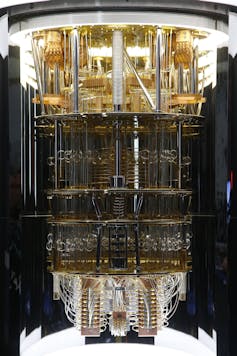The year 2025 marks the 100th anniversary of the birth of quantum mechanics. In the century since the field’s inception, scientists and engineers have used quantum mechanics to create technologies such as lasers, MRI scanners and computer chips.
Today, researchers are looking toward building quantum computers and ways to securely transfer information using an entirely new sister field called quantum information science.
But despite creating all these breakthrough technologies, physicists and philosophers who study quantum mechanics still haven’t come up with the answers to some big questions raised by the field’s founders. Given recent developments in quantum information science, researchers like me are using quantum information theory to explore new ways of thinking about these unanswered foundational questions. And one direction we’re looking into relates Albert Einstein’s relativity principle to the qubit.
Quantum computers
Quantum information science focuses on building quantum computers based on the quantum “bit” of information, or qubit. The qubit is historically grounded in the discoveries of physicists Max Planck and Einstein. They instigated the development of quantum mechanics in 1900 and 1905, respectively, when they discovered that light exists in discrete, or “quantum,” bundles of energy.
These quanta of energy also come in small forms of matter, such as atoms and electrons, which make up everything in the universe. It is the odd properties of these tiny packets of matter and energy that are responsible for the computational advantages of the qubit.

Qubits could give quantum computers, such as IBM’s Q System One, a significant advantage over classical computers.
AP Photo/Ross D. Franklin
A computer based on a quantum bit rather than a classical bit could have a significant computing advantage. And that’s because a classical bit produces a binary response – either a 1 or a 0 – to only one query.
In contrast, the qubit produces a binary response to infinitely many queries using the property of quantum superposition. This property allows researchers to connect multiple qubits in what’s called a quantum entangled state. Here, the entangled qubits act collectively in a way that arrays of classical bits cannot.
That means a quantum computer can do some calculations much faster than an ordinary computer. For example, one device reportedly used 76 entangled qubits to solve a sampling problem 100 trillion times faster than a classical computer.
But the exact force or principle of nature responsible for this quantum entangled state that underlies quantum computing is a big unanswered question. A solution that my colleagues and I in quantum information theory have proposed has to do with Einstein’s relativity principle.



